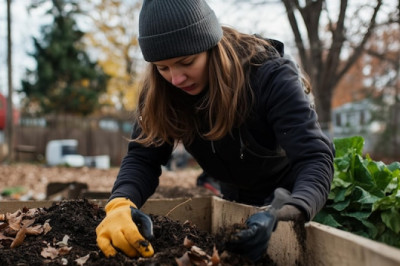Creating a sustainable garden during the winter months is not only a rewarding endeavor but also an important step towards self-sufficiency and environmental stewardship. With the right approach, you can grow your own food, reduce your carbon footprint, and enjoy the beauty of nature all year round. This article will guide you through eight essential steps to DIY your sustainable garden this winter, ensuring that you can cultivate a thriving, eco-friendly space regardless of the cold weather.
Selecting Cold-Hardy Plants
The foundation of any successful winter garden lies in selecting plants that can withstand lower temperatures. Cold-hardy vegetables such as kale, spinach, and Brussels sprouts, along with herbs like rosemary and thyme, are excellent choices for sustaining growth throughout the winter. Researching plants' hardiness zones ensures that you choose varieties well-suited to your local climate conditions. Incorporating perennial plants can also provide structure and continuity from year to year, reducing the need for replanting and thus contributing to the sustainability of your garden.
Utilizing Season Extenders
To protect your plants from frost and extend the growing season, consider using season extenders such as cold frames, hoop houses, or greenhouses. These structures trap heat during the day, keeping the soil and air around your plants warmer than the outside environment. You can construct them from recycled materials like old windows or plastic sheeting, making this a cost-effective and environmentally friendly option. By creating microclimates, you enable a wider variety of plants to thrive beyond their usual growing seasons.
Implementing Companion Planting
Companion planting is a natural way to enhance your garden's health and productivity. By strategically placing plants together that benefit each other, you can deter pests, improve pollination, and increase yields without resorting to chemical fertilizers or pesticides. For example, planting garlic near roses can help repel aphids, while marigolds emit a scent that deters nematodes and other soil pests. This method not only promotes a more resilient garden ecosystem but also supports biodiversity and soil health.
Creating a Composting System
Composting organic waste is a key component of sustainable gardening, turning kitchen scraps and yard waste into nutrient-rich soil amendments. By setting up a compost bin or pile in your garden, you can reduce landfill waste and create a natural fertilizer that enriches the soil and supports plant growth. There are many methods to compost, from traditional bins to worm composting systems, allowing you to choose the best fit for your space and lifestyle. This practice not only recycles nutrients but also fosters a deeper connection with the cycle of life in your garden.
Harvesting Rainwater
Water conservation is crucial in sustainable gardening, and harvesting rainwater is an effective way to minimize reliance on municipal water supplies. By collecting runoff from rooftops into barrels or cisterns, you can gather a significant amount of water for irrigating your garden. This method reduces your environmental impact and can also lower your water bills. Additionally, rainwater is often softer and free of chlorine and other chemicals found in tap water, making it better for plants.
Mulching to Protect Soil
Mulching is an essential practice for winter gardening, helping to insulate soil, retain moisture, and suppress weeds. Organic mulches, such as straw, leaves, or wood chips, add nutrients back into the soil as they decompose. Applying a thick layer of mulch around your plants can also protect their roots from freezing temperatures, reducing the need for frequent watering and providing a habitat for beneficial insects. This simple yet effective technique plays a vital role in maintaining a healthy, sustainable garden ecosystem.
Encouraging Wildlife
A sustainable garden is a haven for wildlife, offering shelter and food sources for birds, bees, butterflies, and other beneficial creatures. Installing bird feeders, creating insect hotels, and planting native flowers can attract these natural pollinators and pest controllers to your garden. Providing a source of water, such as a birdbath or small pond, further enhances the attractiveness of your garden to wildlife. Encouraging biodiversity not only supports local ecosystems but also adds beauty and interest to your garden space.
Using Natural Pest Control
Managing pests without resorting to chemical pesticides is a cornerstone of sustainable gardening. Techniques such as introducing beneficial insects, using physical barriers like netting or row covers, and practicing crop rotation can effectively control pest populations. Natural remedies, such as neem oil or homemade insecticidal soaps, offer safe alternatives to harsh chemicals. By focusing on preventive measures and ecological balance, you can maintain a healthy garden that thrives in harmony with its surroundings.















Comments
0 comment